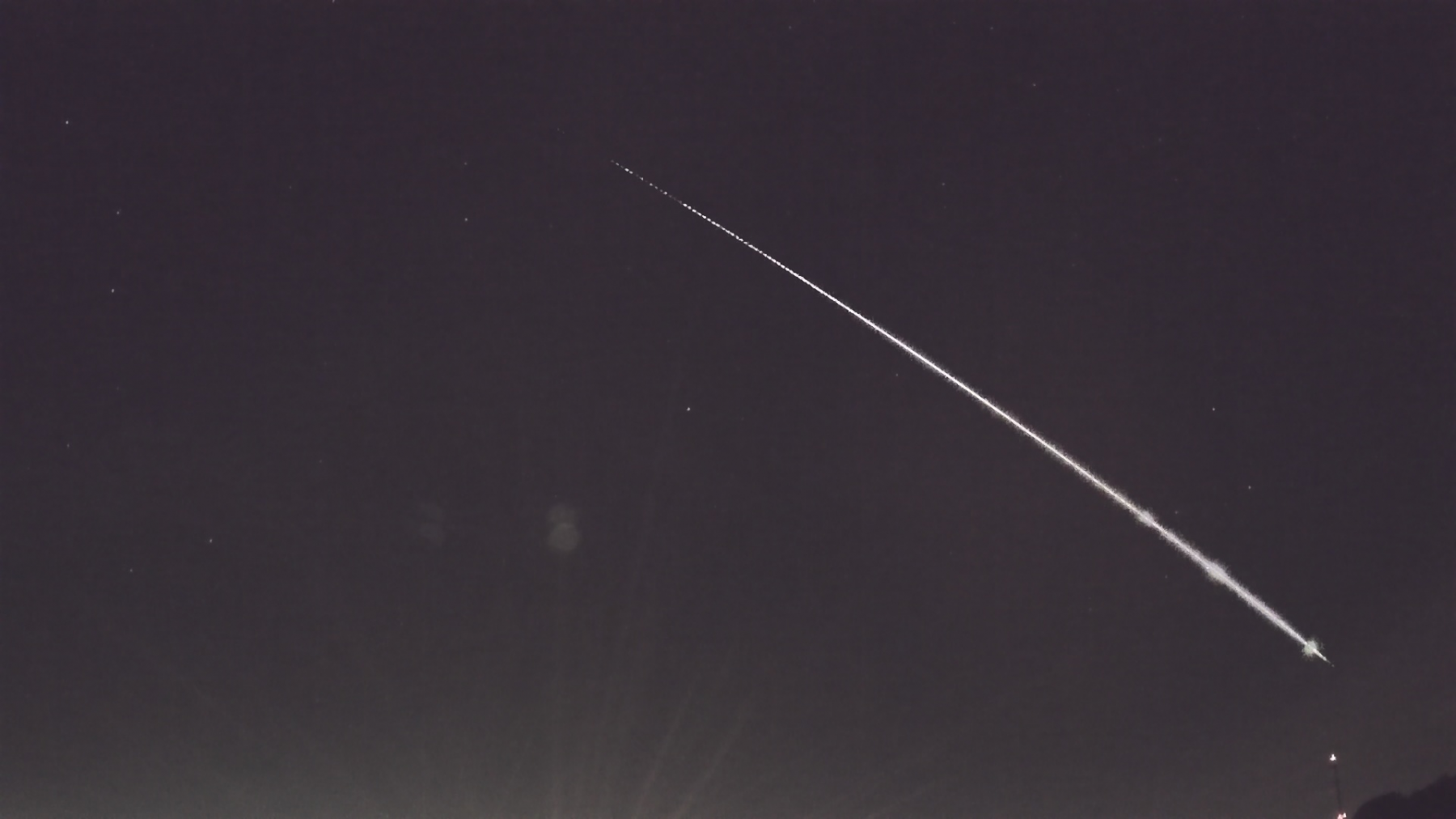 Pat Branch captured this nice flaring meteor using an AllSky camera system at 07:29 UT (3:39 EDT) on 21 May 2021, from Gray Court, South Carolina, USA. ©Pat Branch
Pat Branch captured this nice flaring meteor using an AllSky camera system at 07:29 UT (3:39 EDT) on 21 May 2021, from Gray Court, South Carolina, USA. ©Pat BranchDuring this period, the moon reaches its first quarter phase on Friday June 18th. At that time the half-illuminated moon will set near 01:00 local summer time (LST), allowing the more active morning hours to be free of interfering moonlight. The estimated total hourly meteor rates for evening observers this week is near 3 as seen from mid-northern latitudes (45N) and 4 as seen from tropical southern locations (25S). For morning observers, the estimated total hourly rates should be near 8 as seen from mid-northern latitudes (45N) and 12 as seen from tropical southern locations (25S). The actual rates will also depend on factors such as personal light and motion perception, local weather conditions, alertness, and experience in watching meteor activity. Note that the hourly rates listed below are estimates as viewed from dark sky sites away from urban light sources. Observers viewing from urban areas will see less activity as only the brighter meteors will be visible from such locations.
The radiant (the area of the sky where meteors appear to shoot from) positions and rates listed below are exact for Saturday night/Sunday morning June 12/13. These positions do not change greatly day to day so the listed coordinates may be used during this entire period. Most star atlases (available at science stores and planetariums) will provide maps with grid lines of the celestial coordinates so that you may find out exactly where these positions are located in the sky. A planisphere or computer planetarium program is also useful in showing the sky at any time of night on any date of the year. Activity from each radiant is best seen when it is positioned highest in the sky, either due north or south along the meridian, depending on your latitude. It must be remembered that meteor activity is rarely seen at the radiant position. Rather they shoot outwards from the radiant, so it is best to center your field of view so that the radiant lies at the edge and not the center. Viewing there will allow you to easily trace the path of each meteor back to the radiant (if it is a shower member) or in another direction if it is sporadic. Meteor activity is not seen from radiants that are located far below the horizon. The positions below are listed in a west to east manner in order of right ascension (celestial longitude). The positions listed first are located further west therefore are accessible earlier in the night while those listed further down the list rise later in the night.
These sources of meteoric activity are expected to be active this week.
.
The last of the tau Herculids (TAH) may be visible over the weekend. The current radiant location is expected to lie near 15:44 (236) +37. This area of the sky is located in northern Corona Borealis, 5 degrees northeast of the 4th magnitude star known as Alkalurops (mu1 Bootis). This is not that close to the star tau Herculis, for which this shower is named. Apparently, the discoverers of this display placed the radiant further east toward Corona Borealis and Hercules. It’s also possible that past displays from this source had a different radiant area. This area of the sky is best placed near 23:00 local standard time (LST), when it lies high overhead for observers located in mid-northern latitudes. Rates are expected to be less than 1 meteor per night at this early stage. With an entry velocity of 15 km/sec., the average tau Herculid meteor would be of very slow velocity.
The center of the large Anthelion (ANT) radiant is currently located at 18:16 (274) -23. This position lies in northern Sagittarius, 3 degrees northwest of the 3rd magnitude star known as Kaus Borealis (lambda Sagittarii). Due to the large size of this radiant, Anthelion activity may also appear from southeastern Ophiuchus as well as Sagittarius. This radiant is best placed near 0100 LST, when it lies on the meridian and is located highest in the sky. Rates at this time should be near 2 per hour as seen from the Northern Hemisphere and 3 per hour as seen from south of the equator. With an entry velocity of 30 km/sec., the average Anthelion meteor would be of slow velocity.
The Daytime Arietids (ARI) are active from May 29-June 17 with maximum activity occurring on the June 4th. These meteors are difficult to catch as the radiant only lies 30 degrees west of the sun. Therefore, the only time these meteors are visible is during the last dark hour before dawn. The radiant is currently located at 03:14 (049) +25. This area of the sky is located in northern Aries, 5 degrees southeast of the 4th magnitude star known as 41 Arietis. Current rates are expected to be less than 1 no matter your location. With an entry velocity of 42 km/sec., the average meteor from this source would be of medium velocity.
As seen from the mid-northern hemisphere (45N) one would expect to see approximately 6 sporadic meteors per hour during the last hour before dawn as seen from rural observing sites. Evening rates would be near 2 per hour. As seen from the tropical southern latitudes (25S), morning rates would be near 9 per hour as seen from rural observing sites and 3 per hour during the evening hours. Locations between these two extremes would see activity between the listed figures.
| SHOWER | DATE OF MAXIMUM ACTIVITY | CELESTIAL POSITION | ENTRY VELOCITY | CULMINATION | HOURLY RATE | CLASS |
| RA (RA in Deg.) DEC | Km/Sec | Local SummerTime | North-South | |||
| tau Herculids (TAH) | Jun 02 | 15:44 (236) +37 | 15 | 00:00 | <1 – <1 | III |
| Anthelion (ANT) | – | 18:16 (274) -23 | 30 | 02:00 | 2 – 3 | II |
| Daytime Arietids (ARI) | Jun 07 | 02:52 (043) +24 | 38 | 11:00 | <1 – <1 | IV |


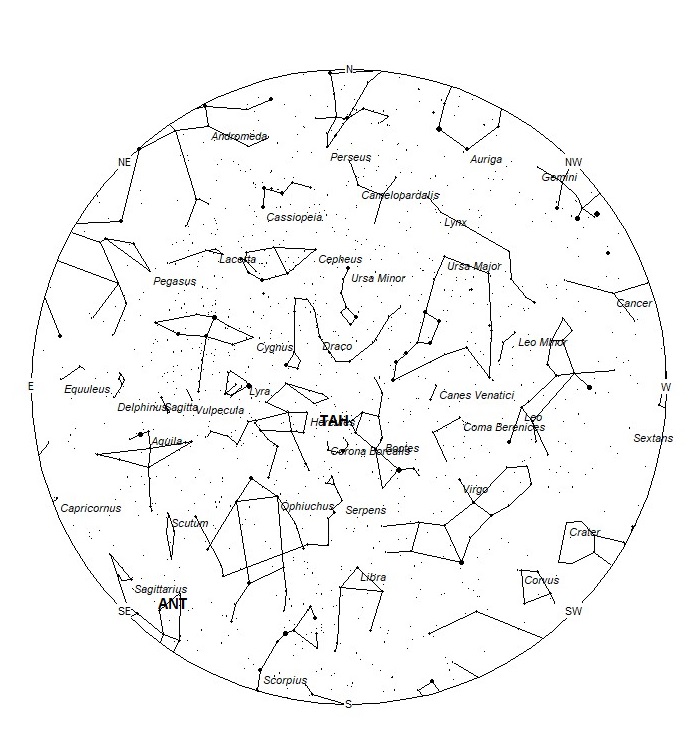
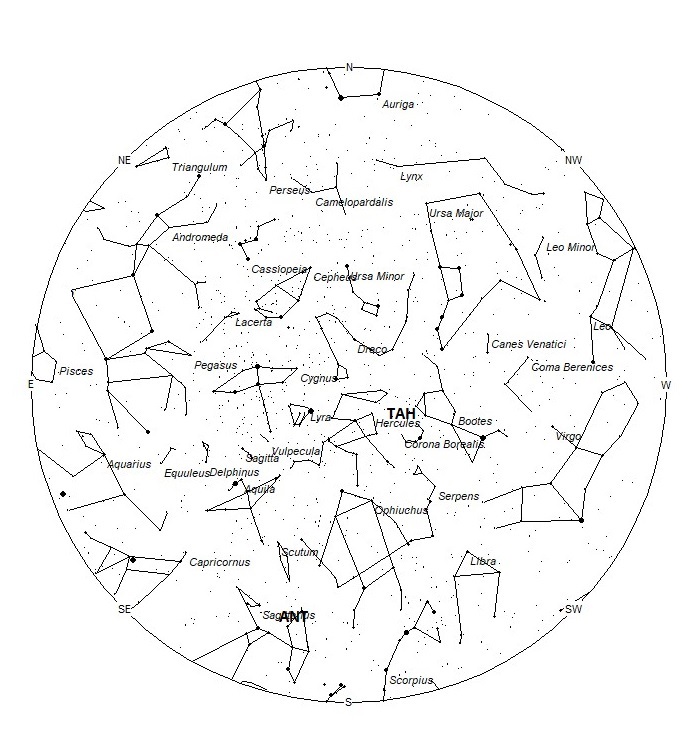
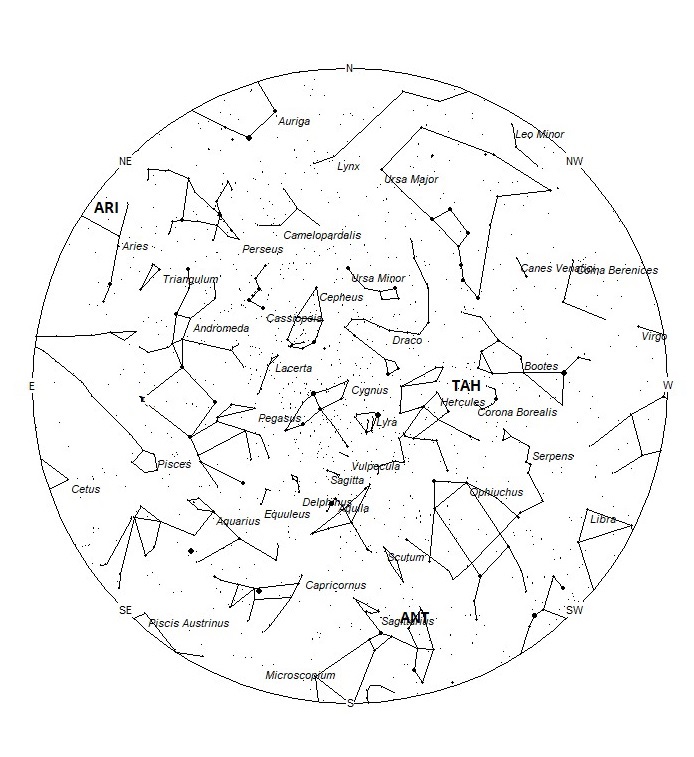

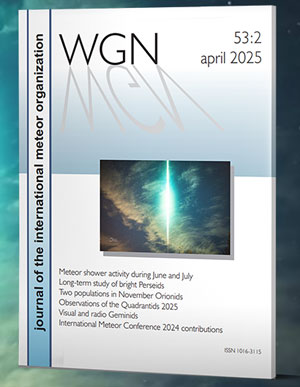
 You saw something bright and fast? Like a huge shooting star? Report it: it may be a fireball.
You saw something bright and fast? Like a huge shooting star? Report it: it may be a fireball.  You counted meteors last night? Share your results with us!
You counted meteors last night? Share your results with us!  You took a photo of a meteor or fireball? You have a screenshot of your cam? Share it with us!
You took a photo of a meteor or fireball? You have a screenshot of your cam? Share it with us!  You caught a meteor or fireball on video? Share your video with us!
You caught a meteor or fireball on video? Share your video with us!